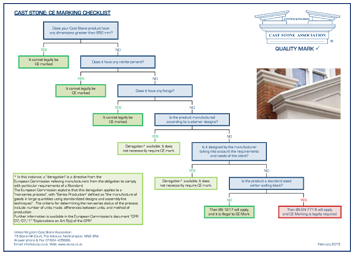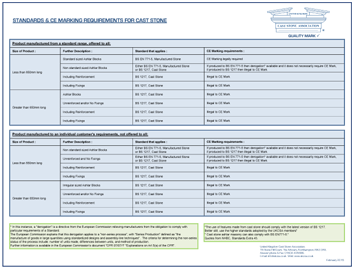British Standards and CE Marking of Cast Stone
The UK has gone through a transition period from the Construction Products Directive (CPD) into the full introduction of the Construction Products Regulation (CPR) on 1st July 2013. At that time CE marking became mandatory for certain construction products which are covered by harmonised European standards, where the Annex Z of the relevant European Standard details the requirements for CE marking.
A CE mark is a logo and Declaration of Conformity which is affixed by the manufacturer to a product to indicate that the product conforms to certain safety requirements in the Building Regulations in the country where the products are intended to be used.
The United Kingdom Cast Stone Association (UKCSA) has been involved in recent years with the BSI, and other industry bodies, in clarifying the Scope of BS 1217, the British Standard Specification for Cast Stone, and any potential conflicts it may have with BS EN 771-5, the European Standard for “Manufactured stone masonry units”. The results of our findings indicate that the only clear requirement for CE Marking is for standard sized ashlar blocks, which do fall under the requirements of BS EN 771-5 and legally require CE marking from 1st July 2013.
For Further guidance UKCSA has produced a “Cast Stone CE Marking Checklist”, and a “Standards & CE Marking Requirements for Cast Stone” document, which are both available to download below, and should be read together with the European Commission’s “CPR 07/07/1” document, which expands on the definition of derogation.


